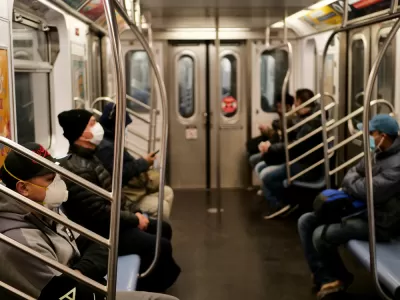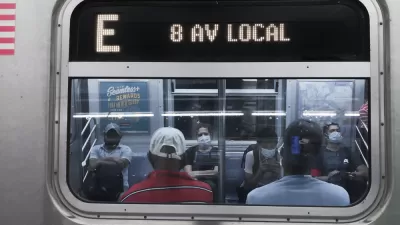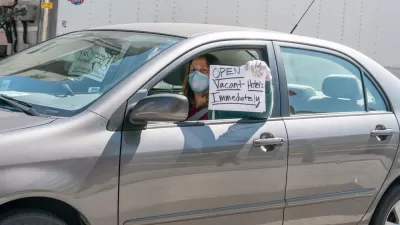There is little evidence that the New York Subway is spreading the coronavirus, according to analysis by Alon Levy.

Alon Levy writes a rebuttal to arguments about the role of the New York Subway in spreading the coronavirus, especially a paper by MIT economist Jeffrey Harris, "claiming that the subways did in fact seed the Covid-19 epidemic in New York." According to Levy, however, Harris cites no evidence in building this argument, and so Levy debunks the paper.
After considering the low infection rates in other high-transit cities worldwide, Levy returns the focus to New York City:
So the question is not whether rapid transit systems are inherently unsafe for riders, which they are not. It’s whether New York, with all of its repeated failings killing tens of workers from exposure to the virus, has an unsafe rapid transit system. Nonetheless, the answer appears to be negative: no evidence exists that the subway is leading to higher infection rates, and the paper does not introduce any.
Levy takes on both of two central claims in the paper—one about infection rates in Manhattan relative to other boroughs and the second about high infection rates in neighborhoods adjacent to subway lines. According to Levy, "neither is even remotely correct."
The details of Levy's counterargument are best left to the source article, which is linked below, although other public health and transit experts also spoke out against the findings of Harris's paper, as evident in an article written by Aaron Gordon for Motherboard.
FULL STORY: The Subway is Probably not Why New York is a Disaster Zone

Manufactured Crisis: Losing the Nation’s Largest Source of Unsubsidized Affordable Housing
Manufactured housing communities have long been an affordable housing option for millions of people living in the U.S., but that affordability is disappearing rapidly. How did we get here?

Americans May Be Stuck — But Why?
Americans are moving a lot less than they once did, and that is a problem. While Yoni Applebaum, in his highly-publicized article Stuck, gets the reasons badly wrong, it's still important to ask: why are we moving so much less than before?

Using Old Oil and Gas Wells for Green Energy Storage
Penn State researchers have found that repurposing abandoned oil and gas wells for geothermal-assisted compressed-air energy storage can boost efficiency, reduce environmental risks, and support clean energy and job transitions.

Updating LA’s Tree Rules Could Bring More Shade to Underserved Neighborhoods
A new USC study finds that relaxing Los Angeles’ outdated tree planting guidelines could significantly expand urban tree canopy and reduce shade disparities in lower-income neighborhoods, though infrastructure investments are also needed.

California's Canal Solar Projects Aim to Conserve Resources and Expand Clean Energy
California’s Project Nexus has begun generating electricity from solar panels installed over irrigation canals, with researchers and state agencies exploring statewide expansion to conserve water and boost clean energy production.

HHS Staff Cuts Gut Energy Assistance Program
The full staff of a federal program that distributes heating and cooling assistance for low-income families was laid off, jeopardizing the program’s operations.
Urban Design for Planners 1: Software Tools
This six-course series explores essential urban design concepts using open source software and equips planners with the tools they need to participate fully in the urban design process.
Planning for Universal Design
Learn the tools for implementing Universal Design in planning regulations.
Heyer Gruel & Associates PA
City of Moreno Valley
Institute for Housing and Urban Development Studies (IHS)
City of Grandview
Harvard GSD Executive Education
Salt Lake City
NYU Wagner Graduate School of Public Service
City of Cambridge, Maryland





























